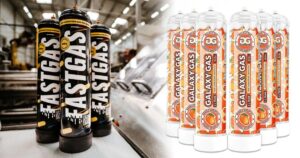Is Nitrous Oxide Safe?
FastGas Blog
Is Nitrous Oxide Safe to Use?
Indeed when you think of using nitrous oxide, whether for the food industry, medicine, or recreational settings, the first thought that comes to mind is: is it safe? Well, you are not wrong for worrying. You, on the contrary, are in your right to know what’s best before manipulating nitrous oxide.
This guide points out five exciting facts regarding nitrous oxide’s safety that you will value.
#1 Is Nitrous Oxide Flammable?
Nitrous oxide is a colorless, odorless gas with a slightly sweet taste and smell. Though it is classified as an inflammable gas, it is actually not highly flammable on its own. Instead, nitrous oxide is known to accelerate the burning of other combustible materials in a fire. Additionally, this gas is soluble in water and is heavier than air, making it a potential hazard for inhalation or ignition during certain conditions. Overall, nitrous oxide is best understood as a potentially dangerous but generally safe chemical compound.
#2 Nitrous Oxide Should Not be Abused
We can not cover the sun with one finger; people misuse N2O.
Unfortunately, its sedative properties attract many young enthusiasts who seek to inhale it to get a feeling of well-being and suave euphoria. Sometimes even numbness of the body.
What can cause the misuse of N2O? Depends! You won’t recognize any critical second effect if done responsibly and in small doses once in a while. If done out of line and in significant amounts for a more extended period, you might experience mild hallucinations, hypoxia due to the lack of oxygen supply to the lungs, and even deficiency of vitamin B12. Not to mention that you might cause damage to your nervous system, which in turn will cause numbness, tingling, or weakness in the hands and legs.
#3 Use Only Food-Grade N2O Whip Cream Chargers for Making Whipped Cream
The culinary world is perhaps the sector where people use N2O the most and whipped cream the most general application. Nevertheless, the magic does not stop with whipped cream. N2O allows many chefs, bakers, and bartenders to create not just delicious cream but also a range of foams, sauces, infusions, and creative cocktail toppings.
Therefore, you can imagine that N2O for medicinal use can not be the exact fit for human consumption, and it isn’t.
N2O in the food industry is recognized as food-grade nitrous oxide and referenced as a food additive under code E942.
In this way, if you wish to prepare large batches of a special cream, you better get food-grade N2O.
Click here to discover 4 Applications of Nitrous Oxide Worth Considering.
#4 Storing N2O at a Cool Place
Previously we said that N2O is not highly flammable, and we keep our word. The next update concerns the space where you need to store nitrous oxide. So, if you usually buy nitrous oxide in bulk and store it somewhere, ensure the area is well-ventilated and cool enough to keep the gas temperature intact. The critical point for N2O is 97.5°F (around 36 degrees) and 1,051 PSI. Supercritical fluids are compressible similar to gases. It could detonate at temperatures over 650 °C (1202 °F).
#5 Understand Nitrous Oxide’s System Performance for Better Applicability
Using an N2O whip cream chargers is more than just opening it with a nozzle or a pressure regulator. It is essential to consider specific guidelines, mostly composition or what alters its composition.
In the chemical framework, N2O is two molecules of nitrogen and one of oxygen. Below 97.5°F (36 degrees), pressurized nitrous oxide exists as both liquid and gas phases in balance. As the bottle discharges, a small amount of the liquid phase will vaporize, and the resulting gas phase will occupy the free volume. The pressure depends entirely on temperature.
Let’s remember that vaporization is the primary process by which a substance changes from a liquid state to a gaseous state.
Consequently, the pressure will remain constant as long as there is a constant temperature.
Our advice is always to check the label of the bottles you buy. There are strict regulations that N2O whip cream chargers producers must follow to supply pressurized N2O.
Fast Gas complies with all European Regulations for ADR goods.





